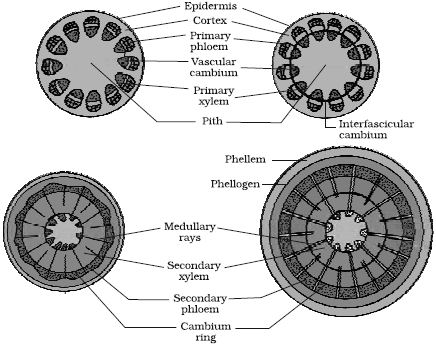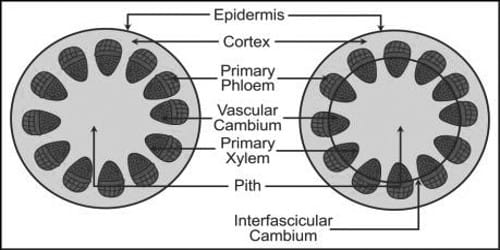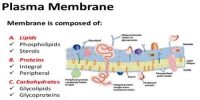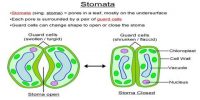The cambial ring becomes active and begins to cut off new cells, both towards the inner and the outer sides. The cells cut off towards pith, mature into secondary xylem and the cells cut off towards periphery mature into secondary phloem. The cambium is generally more active on the inner side than on the outer. As a result, the amount of secondary xylem produced is more than a secondary phloem and soon forms a compact mass.
The cambial ring becomes active and starts cutting off new cells; both on the inner and the outer sides. The primary and secondary phloems get gradually crushed due to the continued formation and accumulation of secondary xylem. The cells which are cut off towards the pith mature into secondary xylem. The primary xylem, however, remains more or less intact, in or around the center. The cells which are cut off towards the periphery mature into secondary phloem. The primary and secondary phloems get steadily compressed due to the continued formation and accumulation of secondary xylem. But the primary xylem more or less remains intact, in or around the center. At some places, the cambium forms a narrow band of parenchyma, which passes through the secondary xylem and the secondary phloem in the radial directions. These are the secondary medullary rays (Figure).

Fig: Activity of the Cambial Ring
The cambial ring becomes active and begins to cut off new cells, both to-wards the inner and outer sides. Hence, a large number of secondary xylem is produced compared to the secondary phloem. The secondary xylem; thus produced soon forms a compact mass. The cells to-wards the inner side get differentiated into the secondary xylem. The cambium is generally more active on the inner side than on the outer. As a result, the xylem increases more rapidly than the phloem and soon forms a hard compact mass.













